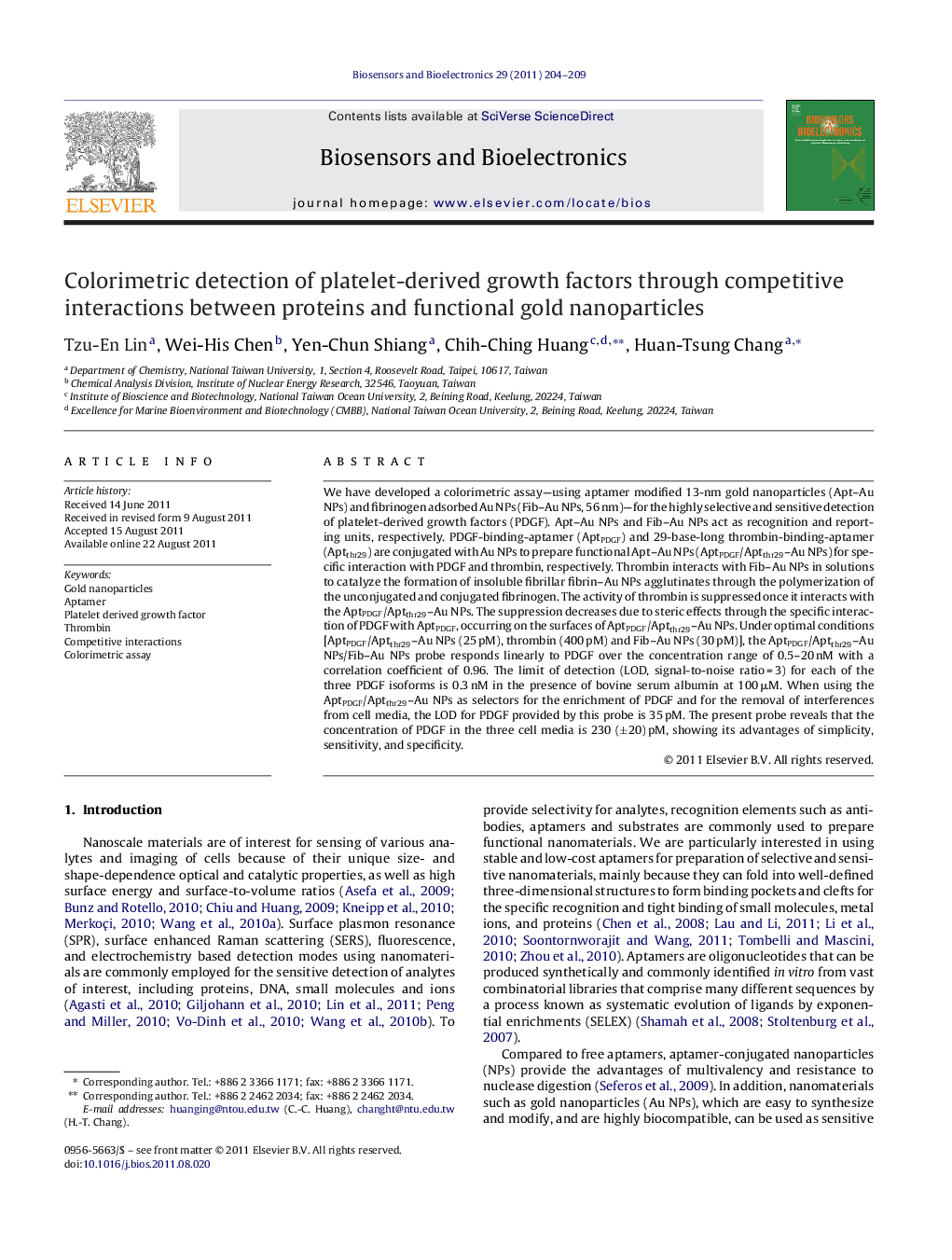| Article ID | Journal | Published Year | Pages | File Type |
|---|---|---|---|---|
| 10429435 | Biosensors and Bioelectronics | 2011 | 6 Pages |
Abstract
We have developed a colorimetric assay-using aptamer modified 13-nm gold nanoparticles (Apt-Au NPs) and fibrinogen adsorbed Au NPs (Fib-Au NPs, 56 nm)-for the highly selective and sensitive detection of platelet-derived growth factors (PDGF). Apt-Au NPs and Fib-Au NPs act as recognition and reporting units, respectively. PDGF-binding-aptamer (AptPDGF) and 29-base-long thrombin-binding-aptamer (Aptthr29) are conjugated with Au NPs to prepare functional Apt-Au NPs (AptPDGF/Aptthr29-Au NPs) for specific interaction with PDGF and thrombin, respectively. Thrombin interacts with Fib-Au NPs in solutions to catalyze the formation of insoluble fibrillar fibrin-Au NPs agglutinates through the polymerization of the unconjugated and conjugated fibrinogen. The activity of thrombin is suppressed once it interacts with the AptPDGF/Aptthr29-Au NPs. The suppression decreases due to steric effects through the specific interaction of PDGF with AptPDGF, occurring on the surfaces of AptPDGF/Aptthr29-Au NPs. Under optimal conditions [AptPDGF/Aptthr29-Au NPs (25 pM), thrombin (400 pM) and Fib-Au NPs (30 pM)], the AptPDGF/Aptthr29-Au NPs/Fib-Au NPs probe responds linearly to PDGF over the concentration range of 0.5-20 nM with a correlation coefficient of 0.96. The limit of detection (LOD, signal-to-noise ratio = 3) for each of the three PDGF isoforms is 0.3 nM in the presence of bovine serum albumin at 100 μM. When using the AptPDGF/Aptthr29-Au NPs as selectors for the enrichment of PDGF and for the removal of interferences from cell media, the LOD for PDGF provided by this probe is 35 pM. The present probe reveals that the concentration of PDGF in the three cell media is 230 (±20) pM, showing its advantages of simplicity, sensitivity, and specificity.
Keywords
Related Topics
Physical Sciences and Engineering
Chemistry
Analytical Chemistry
Authors
Tzu-En Lin, Wei-His Chen, Yen-Chun Shiang, Chih-Ching Huang, Huan-Tsung Chang,
